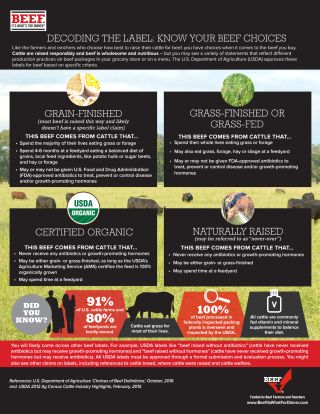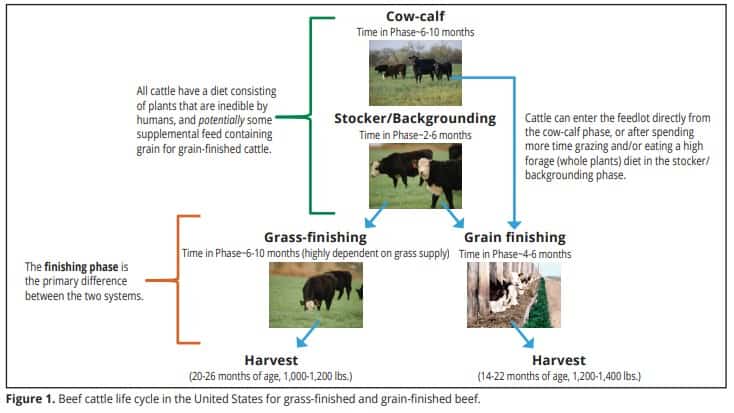Mike and I have always tired to eat healthy, that means that we eat organic meat, organic veggies, watch our sugar intake, try to avoid processed foods. One day I was in the kitchen cooking store bought organic meat and I asked Mike, Why does all store bought meat have a smell to it and is this really healthy for us? So we did some research.
To Place Your Order Now Or to Learn More About US Wellness Meats, Click Here
Grass Fed and Grass Finished Beef comes from cattle that has only eaten a plant based diet their entire lives and have not been given any hormones, antibiotics, or starchy grain. Grass Fed does not always mean Grass Finished. Most Grass Fed Beef starts off on grass, but is finished with starchy grains, hormones, or antibiotics.
I do not know about you, but I have found that all of this can be a little confusing and misleading. So I want to share with you some information that I have learned and cleared up something for me.
Being grass fed and grass finished means that once the animal is weaned, they only eat a plant based diet. According to Grasslandbeef.com, ” The onset of winter doesn’t mean the end of grazing for our animals—there is still stock-piled forage that they consume until it is harvested or snow is an issue. When snow makes grazing impossible, we feed our animals our own hay, which is pasture grass that is harvested and stored when dry. Baleage, fresh pasture grass that is cut at optimal freshness, stored and vacuum packaged while moist, allows for nearly green grass in January. During harsh weather, we supplement with a starch-free grass plant protein for added energy and protein. We never use grain (starch) as it will ruin excellent lipid chemistry.”
Where can I buy grass fed and grass finished beef?
We have found a company that offer grass fed and grass finished meat and we love them. We started ordering from them in June of 2019. Their name is US Wellness Meats. Click here to place an order or see what all US Wellness Meats has to offer. Here is a video of our first order:
If you are not a big grass fed beef person, Grassland beef also offers:
- Grass fed butter
- Grass fed cheese
- Grass fed lamb
- Grass fed bison
- Grass fed pork
- Grass fed poultry
- Organic Seafood
Here is an amazing video from US Wellness Meats that explains more about the grass fed feeding process.
“US Wellness Meats was founded in 2000 in Monticello, Missouri (pop. 98) by visionary farmers, who saw that big-business cattle-raising practices were taking a toll on our animals and our health. By returning to rotational grazing practices that are good for the planet and good for our cattle, we led the way in introducing a new generation to the unmatched taste, tenderness, and healthiness of grass-fed beef.
Our animals live by the nature-approved grazing practices of the bison of the American Great Plains.
For thousands of years, bison thrived in abundance on lush North American grassland. Millions of animals lived in harmony with the land by continuously moving from one grazing area to the next, allowing grassland to regularly renew itself. The relationship was good for the animals and good for the planet. By applying these same practices, US Wellness Meats farmers have introduced the same thriving balance to our own farms. Our animals don’t need antibiotics or growth hormones to grow big and healthy. Our land doesn’t need pesticides or artificial irrigation systems to develop rich, fertile biodiversity.”
Here is a link to their Frequently Ask Questions page.
Does grass fed mean grass finished?
Grass fed does not always mean grass finished. The only way to know for sure is to read the package or do your research. We were buying grass fed meat from a local company because we did not know to ask if their meat was grass fed and grass finished. And once we asked and learned that the meat was grain finished, we started looking for grass fed and grass finished meat and we found US Wellness Meat.

Picture is from Beefitswhatsfordinner.com
Is grass fed beef healthier than grain fed beef?
Grass fed and grass finished beef is better for you than grain finished beef. According to www.health.com, ” It’s much leaner than its conventional counterpart. It’s also higher in key nutrients, including antioxidants, vitamins, and a beneficial fat called conjugated linoleic acid (CLA) that’s been tied to improved immunity and anti-inflammation benefits. Plus, grass-fed beef packs about 50% more omega-3 fatty acids than standard beef (although the amount is still far lower than the total omega-3s found in fatty fish like salmon). Grass-fed beef is also less likely to contain “superbugs”—bacteria that have become resistant to three or more classes of antibiotics—so it’s considered superior from a food safety perspective as well.”
Is grass fed beef finished with grain?
Yes, some grass fed beef is finished with grain. That is why it is so important to know that there is a difference in grass fed grass finished and grass fed and grain finished. If you have a company that is local, do not feel bad about asking them. You have a right to know.
Grass Finished Vs Grain Finished
Grass Finished
Grass finished cattle will continue to say in the pasture during this finishing stage. For grass finished cattle, they usually stay in the finishing phase for 180 – 300 days. When the cattle is ready for sale, they weight between 1000 – 1200 pounds and will be between the ages of 20 – 26 months.
Grain Finished
Grain finished cattle usually spend 100 – 150 day in a feedlot. During this time, cattle will gain an average of 4 pounds per day. When the cattle is ready for sale, they will weight between 1200 – 1400 pounds and will be between the ages of 14 – 22 months old.

Picture and above information is from BeefResearch.org
Do you cook grass fed beef differently?
Yes, and here are some cooking tips from wholefoodsmarket.com. “You may have heard rumors that grass-fed beef is not as tender as grain-fed, but here’s the real story. Since it’s lower in fat, grass-fed beef runs the risk of drying out or becoming overcooked much quicker than grain-fed beef. So the name of the game is to keep the meat moist, an easy task when you consider the following tips:
- Sub in flavor. Replace the missing fat in grass-fed beef with something juicy and flavorful. When you use ground beef – say, for making hamburgers or meatloaf – combine it with an ingredient that will keep things moist. Chopped onions, shredded vegetables like carrots or zucchini, sundried tomatoes, olives, mustards or grated cheese all work wonders. When it comes to steaks, consider marinating them for 4 to 6 hours before cooking to add a boost of flavor and moisture, too.
- Take things down a notch. Grass-fed beef cooks quicker than its grain-fed cousin, so lower the heat on the stove or grill (or about 50 F in the oven, if you’re roasting) to better control the doneness. Otherwise, it can go from perfectly cooked to overdone in a matter of seconds.
- Preheat, preheat, preheat. Be sure your cooking surface – whether it’s a pan or grill – is preheated well before you start cooking. That way, you’ll accomplish a tasty, even sear without overcooking the meat.
- A little oil goes a long way. Because there isn’t much fat in grass-fed beef, be sure to grease your pan or grill with a bit of oil or cooking spray before cooking to ensure that nothing sticks.
- No poking! Save your knife and fork for eating, not cooking. For the juiciest results, resist the urge to poke or turn meat with a knife or fork. Each time you do, more of its moisture will end up in the pan, not on your plate.
- Think 70%. On average, grass-fed beef needs about 30% less time to cook than grain-fed beef, so go ahead and check for doneness a little earlier than usual.
- Forget well done. Grass-fed beef can get dry, tough and toothsome when overcooked, so it’s best to stick with medium-rare or medium steaks. Our advice? Remove beef from the heat around 140 F – or a little more or less, depending on your taste – and tent it loosely with foil to let it rest. While it sits, the temperature will rise another 5 to 10 degrees. (The pros call that “carryover cooking.”) To check the temperature, insert a meat thermometer into the thickest part of the steak, away from any bones.”
Why is grass fed beef more expensive?
Grass-fed beef costs on average about $2.50 to $3 more a pound than store bought beef, according to ConsumerReports.org. The reason grass feed beef is more expensive is because it takes longer to grow a grass fed cattle.
How long does it take to grow cattle?
To grow grass fed and grass finished cattle it takes about 20 – 26 months. The cattle weights about 1000 – 1200 pound. To grow grass fed grain finished cattle it takes about 14 – 22 months. The cattle weight about 1200 – 1400 pounds. Information is from beefresearch.org.
**Disclaimer: This post contains affiliate links.**
I have used some of this meat in my Fissler Multi Pot. Checkout this link
Here is a list of some of what you can buy from US Wellness Meats:
- 1 pound of beef
- 1 pound of ground beef
- Buying beef online
- Grass fed burger
- Grass fed liver
- 8oz Steak
- Beef sausage
- Beef talo
- Buy pork bellies
- Duck fat for sale
- Grass fed tallow
- Low Carb hot dogs
- Most tender beef roast
- Pastured pork
- Pork shoulder or pork butt
- Sugar free sausage
- Free range chicken

To Place Your Order Now Or to Learn More About US Wellness Meats, Click Here
